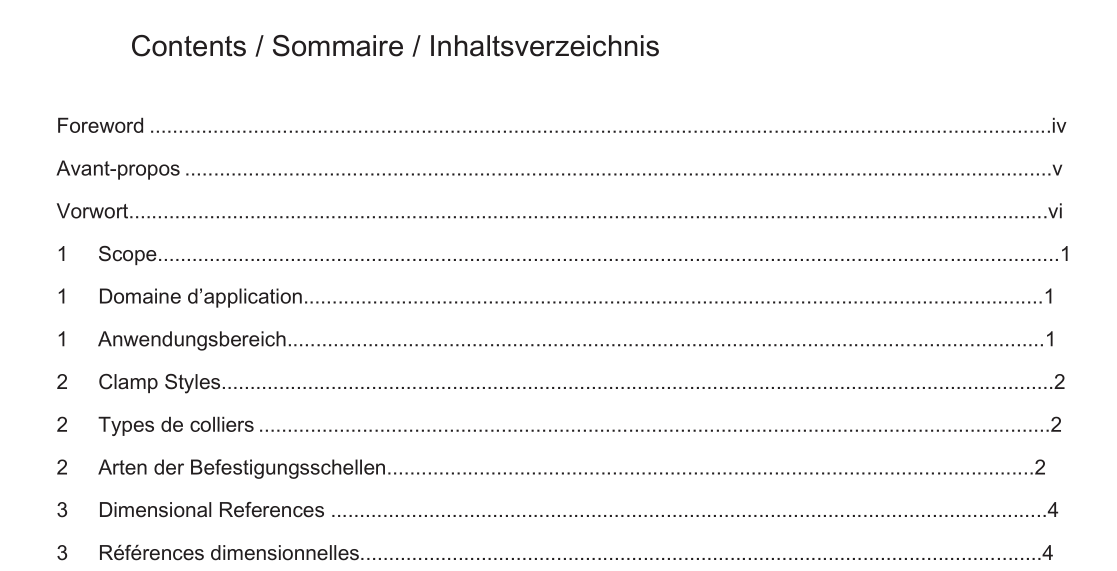BS ISO 16682:2015 pdf download.Aerospace series — Terminology for clamping devices
1 Scope
This International Standard specifies the various clamp styles, dimensional references, and terminology necessary for a clear understanding of part standards, specifications, and correspondence regarding these devices based on UK English language. NOTE In addition to terms used in the official ISO languages (English & French),this International Standard gives the equivalent terms in German; these are published under the responsibility of DIN (German Institute for Standardization). However, only the terms and definitions given in the official languages can be considered as ISO terms and definitions.
2 Clamp Styles
The clamp styles represent those most commonly used for aerospace tube and wiring applications. However with the development of new systems other styles may come into being. These should be added at future updates of this specification. See Table 1.
3 Dimensional References
The following sketches depict the most commonly used dimensional references for loop style and saddle clamps. They are a necessary part of clamp terminology since most clamp standards are tabulated by size and involve different widths, thicknesses, most dimensions and other variables are dictated by the application. See Figures 1 and 2 as examples for typical clamp styles and Table 2.
Has a radius where it transitions to the clamp band. Using dimensions e 2 and e 4 , this radius should nest or be an interference fit with joggle radius of the lower foot or saddle base, when installed. Failure to do so could result in premature breakage when under vibration. Slotted holes are sometimes incorporated in either the top foot or lower foot. These are not recommended for hydraulic applications, or other high vibration environment due to loss of retention. The cut-off radius r 2 is usually identical for both the lower and upper feet, and permits varying the position of the clamp when butterflying, a type of installation no longer recommended especially under high vibration conditions.
BS ISO 16682:2015 pdf download
